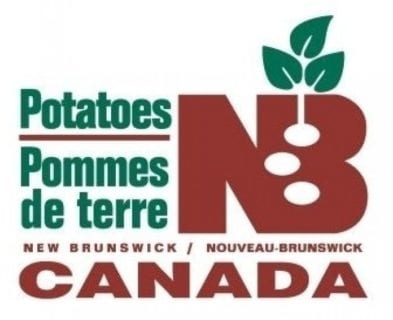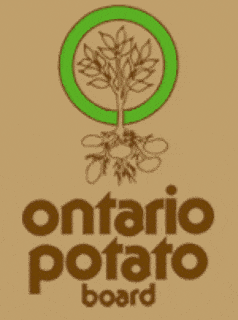Here is your provincial potato association updates from across Canada for the summer 2021 issue of Spud Smart.

British Columbia
Hugh Reynolds with Reynalda Farms in Delta, B.C.
The weather in British Columbia threatened snow and frost in March and April, but fortunately the conditions were generally favourable. Most planters were washed up by the last week in May when the first Warbas potatoes were ready for sale.
Above average temperatures have now been replaced by cooler temperatures, with showers or thunderstorms coming off the water every few days. July and August tend to be dry, and we expect the same for this year. Those with irrigation are checking their equipment.
Currently the potatoes are growing to their genetic potential, and we expect a good crop for 2021. There was some Warba and Chieftain seed not planted. Some additional acres in the interior were planted to Russets. COVID-19 vaccination has gone well in B.C. and the Kennebec seed was mostly planted in anticipation food service demand will return with the reopening of restaurants.
The Canadian International Trade Tribunal (CITT) recently completed its expiry review on certain whole potatoes exported from the U.S. for use or consumption in B.C. In June the CITT announced its decision — the order made on Sept. 9, 2015, will continue for another five years, with renewal slated for 2025.

Manitoba
By: Dan Sawatzky, general manager of the Keystone Potato Producers Association
Reversing the trend of potato growers exiting the industry, Manitoba has seen four new entrants this year adding to the four new growers last year. Previously it had been a decade since anyone new started potato farming — the last major influx occurred in 2003 when J.R. Simplot Company opened a plant in Portage la Prairie. The recent expansion at Simplot has brought opportunity and optimism for these new farms.
Planting in the province started on April 21 with most of the crop in the ground by mid-May. Soil conditions were optimal for seed going in the ground with soil temperature and moisture conducive to little seed decay. Emergence as of the start of June is at 75 per cent is close to normal — perhaps a day or two behind.
Once again frost affected early emerged fields with night time temperatures dropping below freezing during the last full week of May. Daytime temperatures the previous week reached 31 C. Within a week of the frost damage the June 4, the temperature was recorded at 40 C. You can see why weather is usually a topic of conversation among potato growers in Manitoba.
Precipitation since Nov. 1 has tracked at 40 to 60 per cent of normal — May being the exception with some much-needed rains happening. Continued rains throughout the growing season will be necessary as some water reservoirs remain empty or are only partially filled.
In person industry events and gathering are still uncertain with COVID-19 cases remaining high in the province and continuing to pressure on health facilities. Farms, as an essential service, continue to take precautions to ensure their own well-being and the world they feed.

New Brunswick
By: Jean-Maurice Daigle, director of market information for Potatoes New Brunswick
Optimism reigns in 2021 as glimpses of a return to normal (pre COVID-19) market conditions are apparent in future sales and contract volume increases. Potato growers in New Brunswick saw an earlier arrival to spring than they are used to. A mild winter and very little frost meant that the growers were on the fields 10 to 14 days ahead of normal and planting being over 95 per cent done by the first of June.
Growers were also informed by the processors late last fall that the contract volume would return to crop ‘19 levels and thus as a result, planted acres in the province will be up 15 to 18 per cent compared to last year as a result in increased contract demand. These spring conditions are a welcome change from the previous year where COVID-19 was causing havoc on demand. Processors were wondering what to do with the excess processing potatoes in storage and cutting volume to reflect loss sales.
Following a very difficult crop year in 2020 due to drought conditions throughout the province and reduced yield, there is hope amongst the growers that 2021 will shape up to be a “normal” year. Although there is still a lot of growing season left, the start is certainly a pleasant welcome.
The forecast is calling for needed rain and growers are busy with hilling operations. It remains to be seen what the crop year will bring, but fingers are crossed Mother Nature cooperates and helps the growers produce a quality crop.

SUBHEAD: Ontario
By: Kevin Brubacher, general manager of the Ontario Potato Board
Planted acreage in Ontario is expected to remain similar to last year. Ontario producers are expected to plant approximately 36,000 acres to potatoes this year. This estimated acreage will be verified mid-July when our planted acreage survey is complete.
As Ontario begins the reopening plan, we are hopeful foodservice business will begin to bounce back. Throughout the spring, fresh and process markets have been steady.
At the time of writing at the start of June, the majority of acreage has been planted. Spring growing conditions have been favourable and early crop potatoes are looking healthy. Most areas have been lucky to receive some much-needed precipitation, however, many areas are already supplementing rainfall with irrigation.
Again, because of COVID-19 our plans to host our annual field days this summer are still uncertain. We will most likely be holding these events virtually. The Potato Research Field Day at the Elora Research Centre and the Ontario Potato Field Day held at HJV Equipment in Alliston have become much anticipated events each summer. We are extremely excited for the day we are able to once again host these events safely and see everyone in person. Please feel free to reach out to the board office for details and updates on these events as the summer progresses.

Quebec
By: Sarah-Maude Larose, project officer for Les Producteurs de pommes de terre du Québec
Spring arrived early for most regions of Quebec, and we had nearly ideal planting conditions as well. Spring has been generally dry and windy, but most regions did receive some much-needed rainfall at the end of May.
Overall, crop development is progressing well. Germination and growth have been challenged at a variety of temperatures. Maximums above 30 C were recorded in May, while other days and nights the temperature dipped causing frost damages. Damaged potatoes should send up new growth within 10 to 14 days.
Acreage is projected to increase to meet the processing needs, Chip is expected to remain flat, and a slight acreage increase in the fresh and seed sectors are expected. Seed shipping was a busy time, and there didn’t seem to be any open seed available either.
As for the 2020 crop, a few of the larger packers will just make it to new crop. Holdings are in tight supply and quality seems to be good overall. The pandemic has brought a very welcomed increase in demand from the retail sector. We are optimistic the foodservice industry will rebound as the restrictions are being lifted for restaurants and other group gatherings. If the foodservice demand does a strong come back, the tight inventories of the old crop could be an issue.
Mother Nature is ever challenging, we wish every grower timely rains!
Related Articles
Canadian Potato Production to Rise 15.2 Per Cent: NAPM
StatsCan Pegs Western Canada Drought as Bad as 2002 in Some Areas
Heat, Drought in the West, Rain, Good Conditions in the East for Potato Crops








